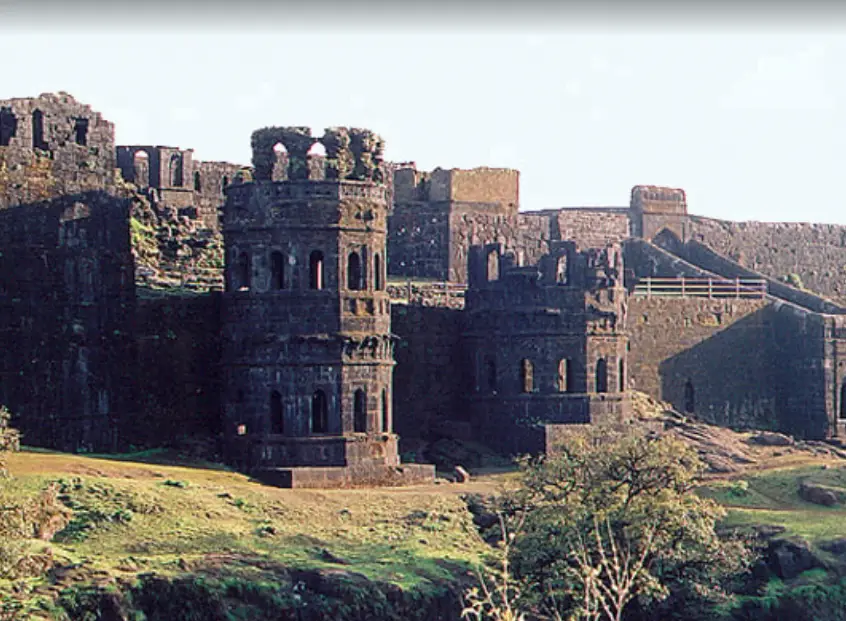Chhatrapati Shivaji Maharaj’s Samadhi is a memorial dedicated to Shivaji
Shivaji an iconic figure in Indian history. It is located within the Raigad Fort, which was the capital of the Maratha Empire that Shivaji founded.
The Samadhi is a black stone structure with a dome-shaped top. It is a simple structure, but it is a place of great reverence for the people of Maharashtra. The memorial is located on a hilltop, and there are stunning views of the surrounding countryside from there.
The Raigad Fort itself is a popular tourist destination, and the Samadhi is one of the most visited places within the fort. If you are ever in Maharashtra, it is definitely worth a visit.
Raigad Fort: A Symbol of Maratha Prowess
Raigad Fort, perched atop the Sahyadri mountains at a staggering 2,700 feet, is more than just a historical monument; it’s a testament to Shivaji Maharaj’s vision and the Maratha Empire’s might. Here’s a glimpse into its architectural marvels and its historic battles:
History:
- Originally known as Rairy Fort, it was captured by Shivaji in 1656 and renamed Raigad, meaning “King’s Fort.”
- Under Shivaji’s leadership, with his chief engineer Hiroji Indulkar, the fort underwent significant expansion.
- Raigad’s strategic location and impressive fortifications made it the capital of the Maratha empire from 1674 until Shivaji’s death in 1680.
- The fort witnessed a period of turmoil after Shivaji’s demise, changing hands between the Marathas, Mughals, and the Siddi rulers.
Architectural Details:
- The arduous climb to the fort signifies the first line of defense. Over 1700 steps lead to the top, with formidable gates like the imposing Maha Darwaja guarding the entrance.
- The fort boasts magnificent structures like the Raj Sadar (Hall of Public Audience), known for its exceptional acoustics, and the Jagdishwar Temple, dedicated to Shivaji’s family deity.
- Evidence of a meticulously designed water management system with reservoirs and tanks ensured a sustainable water supply within the fort walls.
- The ruins of the Queen‘s quarters, with private chambers and restrooms, offer a glimpse into the royal life within the fort.
- Sadly, the main palace, built primarily with wood, has succumbed to time, leaving behind only the base pillars.
its strategic importance and history suggest it faced multiple attacks throughout its existence. Here’s what we do know:
- The Marathas likely defended Raigad from Mughal forces, particularly during the reign of Aurangzeb who was determined to crush the Maratha rebellion.
- The fort might have also been contested during the power struggles between the Marathas, the Siddis, and other regional powers.
Raigad Fort stands as a symbol of resilience and strategic brilliance. While the exact number of defenses may be lost to history, its imposing presence and the stories etched within its stones continue to inspire.

